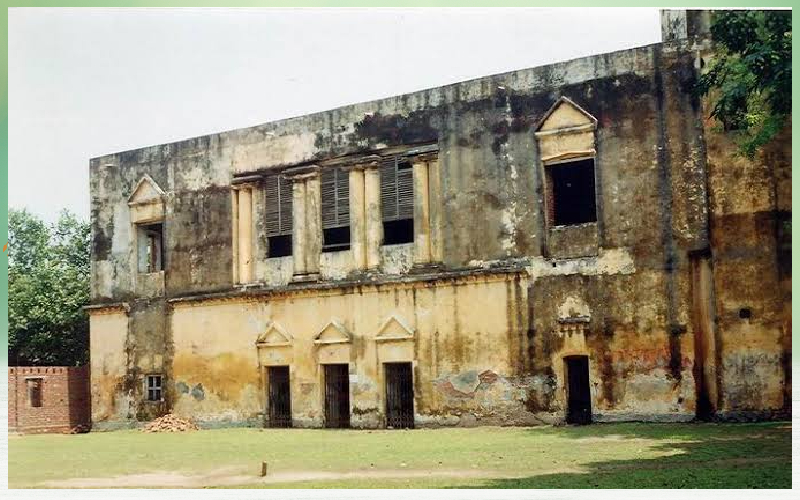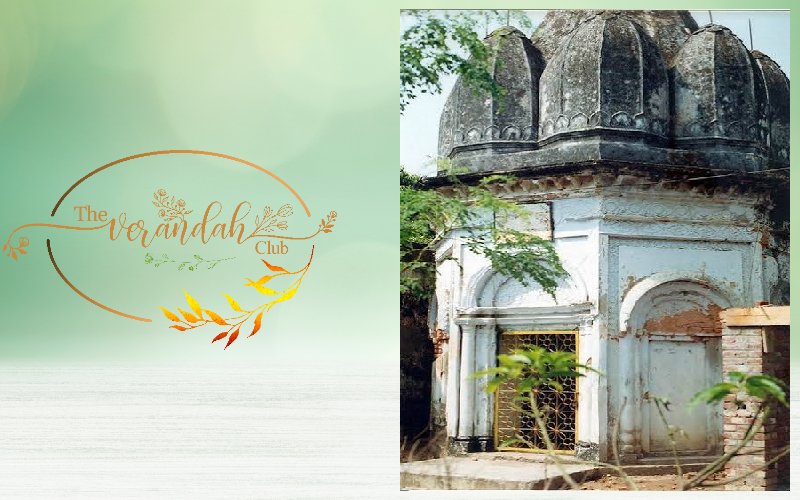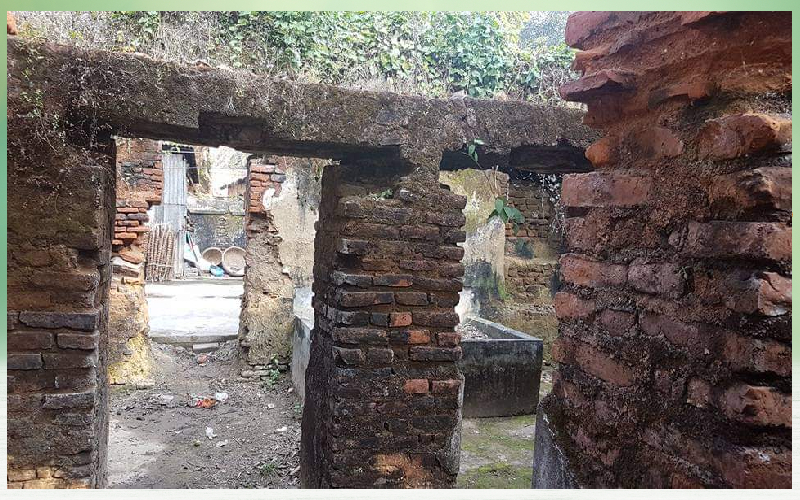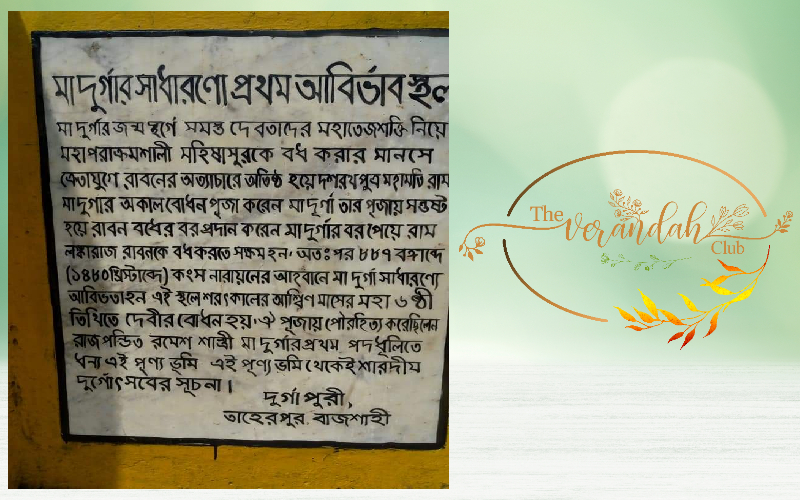First Coming of the Goddess

If you were to travel on the Rajshahi – Natore highway in present day Bangladesh, you will come across the small town of Puthia. Another 17 Kms north from Puthia will bring you to Taherpur which hides a significant landmark in the history of medieval Bengal.
Sometime, probably in the late 14th century, a Pathan warlord named Tahir Khan had established his rule in the region, giving the place its name. In the beginning of the 15th century, an enterprising Brahmin by the name of Kamdev Bhatta ousted Tahir Khan (or one of his successors) and took over Taherpur, establishing his zamindary. After Kamdev Bhatta, his son Bijay Lashkar became the ruler of the region. Bijay Lashkar was an astute man and realized that acrimony with the Gaud Sultanate will be inimical. He instead adopted diplomacy and leveraging the friendly relations with the Sultanate, managed to expand the territorial reigns of Taherpur to a significant scale. He also got awarded the title “Singha” (Lion) by the Gaud Sultan. He established his capital in the Ramaram village and built a magnificent palatial mansion on the east bank of the Baranai River.

The zamindari though reached its zenith during the reign of Kangsa Narayan in the late 16th century. By the last years of Sultanate, Kangsa Narayan had been made the fauzdaar of the region by the Sultan of Bengal. Kangsa Narayan was a feared general – he had repelled several attacks by the Arakan forces (present day northern Myanmar). In his advanced years, he became a deeply religious man. He invited learned scholars and religious men to the zamindary capital, for discourse on the Holy Scriptures. Raja Kangsa Narayan wanted to do something magnificent which would make his name unforgettable for generations to come.
The most famous of the scholars attending his court was Pandit Ramesh Sastri. Sastri advised Kangsa Narayan to perform a yajna and worship the Mother Goddess – Durga – with pomp and fervor. Back in those days, the worship of Durga in Bengal happened in the spring season in the form of Goddess Basanti. It was also a small, private affair – nowhere close to the community magnum opus it is today. However, it was already autumn and Kangsa Narayan was doubtful about the timing of the puja. It was then that Ramesh Sastri reminded him that Lord Ramachandra had worshipped the Mother in autumn wishing for success in his battle against Lanka.

Kangsa Narayan’s mind was now made up. He spared no expense in organizing the grandest celebration the land had ever seen. It is believed that more than eight lakh rupees (in today’s terms) was spent on the celebrations. The idol of Goddess Durga was made of pure gold. The Durga worship of Raja Kangsa Narayan became a talking point for many days to come. Many historians believe this act of grandeur may also have played a critical role in mainstreaming worship of Durga in the Bengali society and turned it into a carnivalesque affair. There was another pivotal moment in this puja. Kangsa Narayan opened up the gates for Hindus of all castes to participate in the festivities – something that was the preserve of the upper castes only till then.
Even after Kangsa Narayan, the Taherpur zamindari remained a force to reckon with. However, their fortunes turned for the worse when Shah Jehan’s son Shah Suja was appointed the governor of Bengal. Suja’s forces attacked Taherpur and the royal palace built by Bijay Lashkar was ransacked. However, the family recovered their lands and Lakshmi Narayan Singha built a new palace, this time on the west bank of the Baranai. A late descendant, Shashishekhreswar earned the titles of “Raja” in 1889 and “Raja Bahadur” in 1896 from the British Crown for his public munificence.

After the partition of India in 1947, Taherpur fell in the jurisdiction of East Pakistan (present Bangladesh). The final chapter of this glorious royal family came to a close in 1950 with East Bengal Estate Acquisition Act, 1950. Kangsa Narayan’s tale became part of another country and was slowly forgotten.
Today the Taherpur Palace has been converted to a government college. Remains of some of the old temples, dating back to Bijay Lashkar and Kangsa Narayan’s time, still stand today – mute testimonies to a glory-filled and elapsed past.

Based out of Kolkata, Trinanjan is a market researcher by profession with a keen interest in Indian history. Of particular interest to him is the history of Kolkata and the Bengal region. He loves to write about his passion on his blog and also on social media handles.
NEXT ARTICLE

At the southernmost tip of this mesmerising ensemble lies the majestic Great Nicobar Island, boasting an impressive landmass of about 910 square kilom...

Bharath has always been a land traversed by spiritual masters/ Guru since time immemorial. These spiritual masters have always upheld the core princip...

South India contains its fair share of unique pilgrimage centres. These divine places of worship have a prominent Sthala Purana, devoted followers, di...